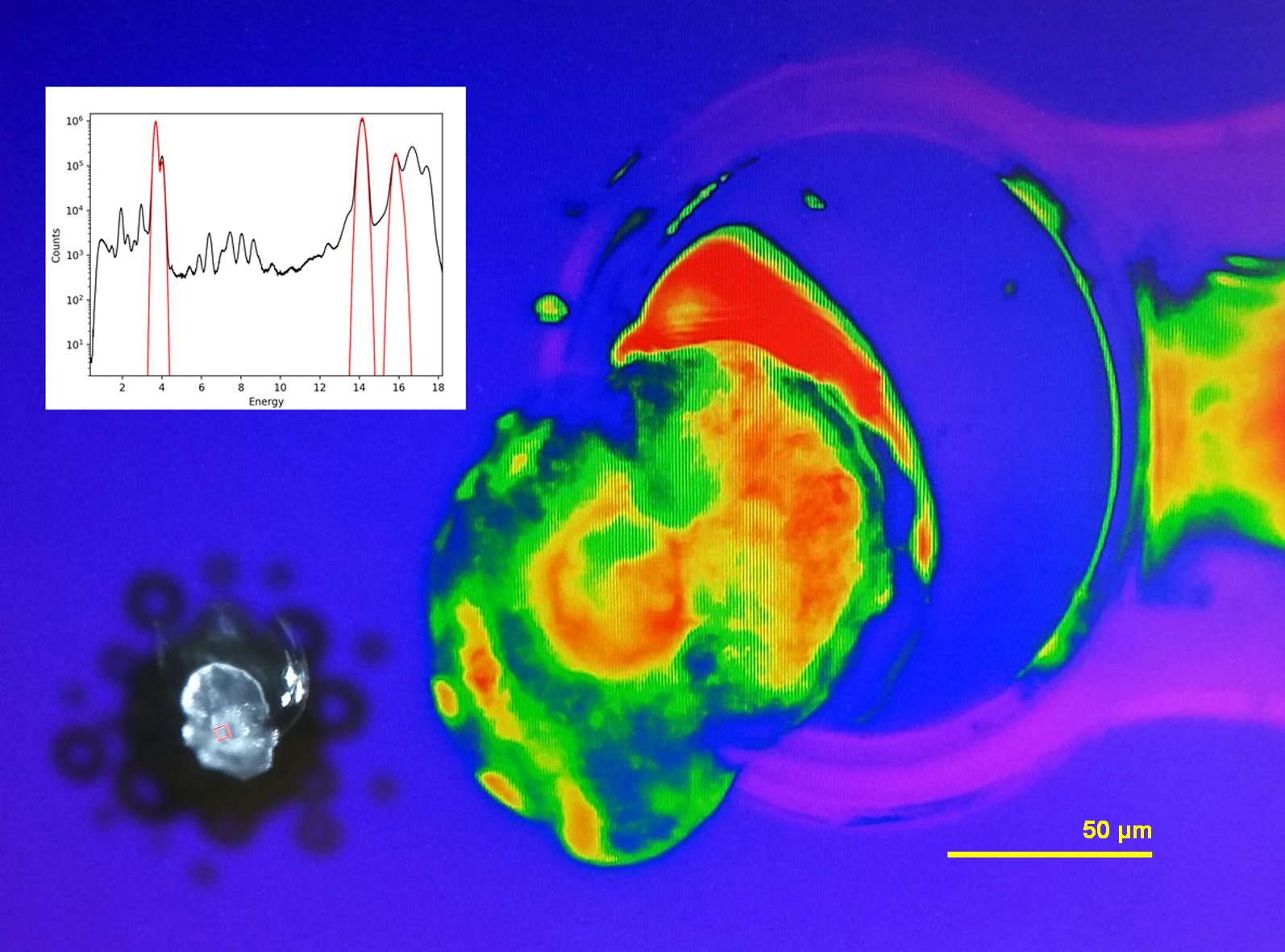SynOtLi
People involved
Tracking potential diadromous life cycle of tropical island pipefish species (Syngnathidae) through minute distribution of metals in the otolith as tracers of environmental transition from freshwater to seawater
The research focuses on exploring larval dispersal and community organisation in island systems.
The project encompasses metal element mapping (S, P, Ca and Sr along with Zn, Mn, Fe, Cu, Co and Ni) and their distribution in the otolith of adult Syngnathidae from recent field data collection (Indo-Pacific islands), grown in fully wild conditions. Information on the distribution and abundance of those elements both at a fine non-scale and on the entire otolith will allow the identification of their incorporation locations and ratios among the incremental otolith lineations and allow tackling the dispersal strategies of the individuals, for instance: are these species amphidromous?
Sub-micron-scale XRF images, with a resolution down to 500 nm, of P, S, Ca, Mn, Fe, Co, Ni, Cu, Zn, and Sr distribution and abundance over the growth increments through the entire life cycle including the metamorphosis from larval to juvenile individuals, as well as higher resolution maps on the minute area of the primordium inherited from maternal material will permit to evidence migration routes taken by fish: (i) Sr vs Ca ratio sign for fresh versus marine water (ii) Zn, Mn, Fe, Cu, Co and Ni are expected to indicate local geochemistry (elements from sediments and crust entrapped in the otolith), (iii) S and P colocation will allow identifying zones were precipitation is under biological control and help unravel increment and growth line significance, (iv) any variation in the distribution pattern of all those elements when getting closer to the otolith ultrastructural striation will highlight biomineralization dynamics in the otolith and finally (v) Ca and trace metals in the otolith layers, organic and carbonate will give information on the routes followed by the individuals since the otolith increments are sustained over the life span.
Funding: SYNCHROTRON SOLEIL
Coordinator: Dr Clara Lord, MCF Sorbonne Université, BIOPAC, clara.lord@mnhn.fr

